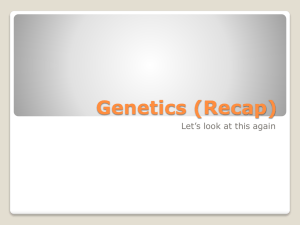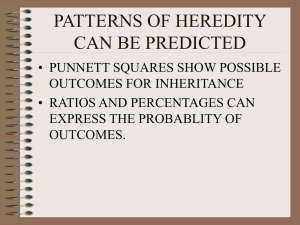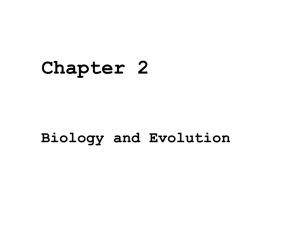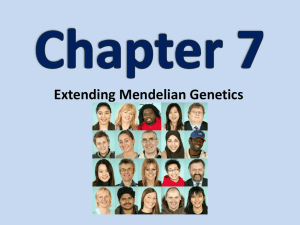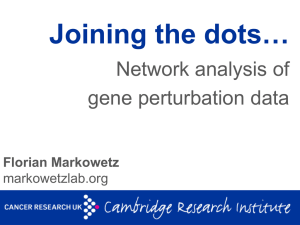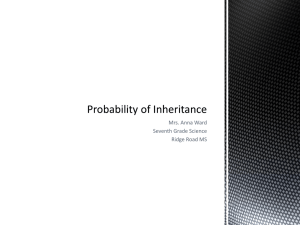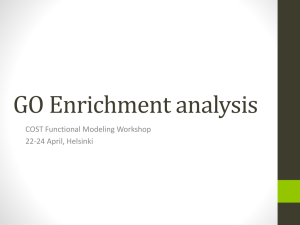Training - Powerpoint - Student Organizations
advertisement
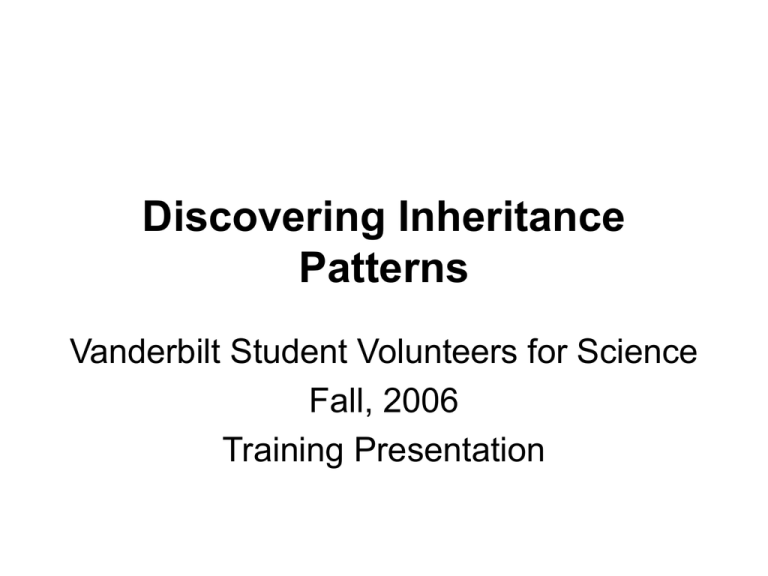
Discovering Inheritance Patterns Vanderbilt Student Volunteers for Science Fall, 2006 Training Presentation Important!!! • Please use this resource to reinforce your understanding of the lesson! Make sure you have read and understand the entire lesson prior to picking up the kit! • We recommend that you work through the kit with your team prior to going into the classroom. • This presentation does not contain the entire lesson—only selected experiments that may be difficult to visualize and/or understand. Introductory Material • Probability - A probability is a measure of how likely it is that something will happen. Probabilities can be shown using percents, fractions or decimals. • Ask the students if they know some everyday situations in which probabilities are used – Weather forecasting, medicine, sports, and science. – Genetics and inheritance involve probabilities. • Inheritance Patterns- A trait is a characteristic of an organism. • Ask the students about what kind of traits humans possess – Hair color, eye color, height, etc. • Vocabulary words: DNA ~ chromosome ~ gene expression ~ individual traits – – – – – Our genetic code is contained in DNA. DNA is condensed into bodies called chromosomes. We inherit half of our chromosomes from each of our parents. Genes are the areas on a chromosome that dictate a certain trait. When this gene is expressed it becomes part of the phenotype, or physical appearance. Introductory Material • Genotype - genetic traits that are coded in our DNA • Phenotype - physical traits that are shown in our physical person • Ask: Can a person’s genotype, or genetic traits, be different from their phenotype, or physical traits? – Yes, because not all genes are expressed. Genes for one trait can interfere with another. For example if you have one gene for brown eyes and the other for blue, the gene for brown eyes can mask the gene for blue causing you to have brown eyes. The gene for brown is called a dominant gene. The blue one is called a recessive gene because it is only expressed when there are two such genes present. • We can use Punnett (PUH-nit) squares to determine the probability of inheritance. IV. Punnett squares (p.3) • • • A brown-eyed mother and father have four children, three have brown eyes and one has blue eyes. Where did the blue eyes come from? Facts to acknowledge: – The phenotype is either brown eyes or blue eyes. – The genotype for brown eyes is Bb or BB. The genotype for blue eyes is bb. – The B is the dominant gene for brown eyes and the b is the recessive gene for blue eyes. – If both genes are the same BB or bb this is called homozygous. – If both genes are different in the same person this is called heterozygous. Dominant Genotype Recessive Genotype Other brown hair BB red hair bb Bb = blond hair * brown eyes BB blue eyes bb Bb = hazel eyes * freckles FF, Ff no freckles ff free earlobe AA, Aa attached earlobe aa tongue rolling RR, Rr no tongue rolling rr CC straight hair cc curly hair Cc = wavy hair * IV. Punnett squares (cont.) • • Ask: What is the probability of inheriting each genotype? Filling in the Punnett Square: – – – – • This process is a simulation of genotypes four children could inherit. – • The father’s genes (Bb—heterozygous dominant) are placed on top of the Punnett square with each gene situated over one column. The mother’s genes (also Bb) are placed to the side with each gene next to its own row. The father’s dominant B gene is written in each square below it; similarly, the recessive b gene is placed in the squares below it. The mother’s dominant B gene is written in both squares to the right of it, as is the recessive b gene. In other words, there is a 75% chance a child will be brown-eyed (3 of 4 squares are either BB or Bb) and a 25% chance a child will be blue-eyed (1 of the 4 squares is bb). Pass out the Punnett Square worksheets and genotype/phenotype table for practice. Bfather bfather Bmother BB Bb bmother Bb bb V. Inheritance game (p.5) • • • • • Organize the class into partners. Pass out an observation sheet, two parent cards, and a penny to each pair of two students. Have one student flip the penny while the other records the data. Have each student create Punnett squares to predict the phenotype of the offspring using the genotypes that are written on the parent cards. The students will flip a coin twice for each phenotype: once for the maternal gene and the second for the paternal gene. – – • • If it lands on heads, they are to use the gene on the right. If it lands on tails, they are to use the gene on the left. Do this for each parent and each trait. Have some students present their data and the phenotype of their offspring to the rest of the class. VI. Individual game (p.6) • • Pass out a blank face worksheet and an individual traits worksheet (the one with various facial features and their genotypes) to each pair of students. Tell students to flip the coin for each trait, starting with hair. – For this activity, heads = dominant and tails = recessive. • • Suggest that they write down the genotype that is obtained by the coin flip. After determining the genotype of each trait, tell the students to draw in the corresponding phenotype (from the individual traits worksheet) on the blank face.

